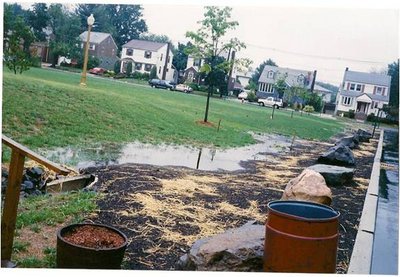SECAUCUS — On Monday the town of Secaucus received the results of environmental testing conducted last fall at the old Keystone Metal Finishing plant on Humboldt Street.
With the help of a $60,000 grant last August from the Hudson County Economic Development Corporation (HCEDC), the town hired engineers from Birdsall Services Group-PMK to conduct another round of environmental testing at the notorious site. A 1.37-acre site located along Humboldt Place and Raydol Avenue in a mostly residential neighborhood, Keystone Metal Finishing operated in town from 1947 to 1991, when the plant closed after the owner’s death. Remediation of groundwater and soil at the site began in 1996, two years after the plant was demolished. Since then, the town has continued to monitor the success of the remediation and any environmental impact of the contamination.
Town Councilman Gary Jeffas, who represents the 1st Ward where the Keystone site is located, said preliminary test results from Birdsall came in on March 21.
“Nineteen of the monitoring ground water wells on-site and off-site were tested,” he said. “The results of the groundwater sampling indicate that the original contaminants are still present in the ground water in that area and it’s above the New Jersey Departments of Environmental Protection (DEP) standards. However, the concentrations, for the most part, have decreased over time from 1999 to 2010, and that’s mainly the result of the remediation that was done there.”
Past remediation of the area included soil removal and chemical injections into the ground.
The overall plume of the contamination is now 50 percent smaller than what it was in 1990, but it hasn’t decreased significantly since 2004.
Based on these results the town wants to test the homes located 100 feet or less from the groundwater contamination for vapor intrusion.
Birdsall has contacted the Environmental Protection Agency (EPA), the DEP, and the HCEDC to see if there are any funding sources available for this planned air sampling, which could cost another $65,000.
Environmental problems at the Keystone site date back to 1991. That year, Keystone owner Joseph Karet died and the town discovered 45 unsealed drums on the property that contained several contaminants, including cyanide, alcohol, hydrochloric acid, and other hazardous materials.
Town officials learned in 1997 that contamination from the Keystone site had spread to several nearby homes and was present in deep level groundwater. Despite having this information, town officials, under the administration of former Mayor Anthony Just, didn’t inform the public or affected property owners. The information was not publically released until 1999.
After Just left office, the town spent $750,000 to remediate the land. In addition, a number of monitoring wells were installed to allow engineers to conduct ongoing tests of groundwater, both at the Keystone site specifically, and at off-site locations near some of the affected homes. – E. Assata Wright
Our Digital Archive from 2000 – 2016
